23UCHEC53 – PHYSICAL CHEMISTRY – I
UNIT I: THERMODYNAMICS – III
Free energy and work functions – Need for free energy
functions, Gibbs free energy, Helmholtz free energy – their
variation with temperature, pressure and volume, criteria for
spontaneity; Gibbs-Helmholtz equation – derivations and
applications; Maxwell relationships, thermodynamic equations
of state; Thermodynamics of mixing of ideal gases, Ellingham
Diagram-application.
Partial molar properties – chemical potential, Gibbs,
Duhem equation, variation of chemical potential with
temperature and pressure, chemical potential of a system of
ideal gases, Gibbs-Duhem-Margules equation.
UNIT II: CHEMICAL KINETICS
Rate of reaction – Average and instantaneous rates,
factors influencing rate of reaction – molecularity of a reaction
– rate equation – order of reaction. Order and molecularity of
simple and complex reactions, Rate laws – Rate constants –
derivation of rate constants and characteristics for zero, first
order, second and third order (equal initial concentration) –
Derivation of time for half change with examples. Methods of
determination of order of Volumetry, manometry and
polarimetry.
Effect of temperature on reaction rate – temperature
coefficient – concept of activation energy – Arrhenius equation.
Theories of reaction rates – Collision theory – derivation of
rate constant of bimolecular gaseous reaction – Failure of
collision theory. Lindemann’s theory of unimolecular reaction.
Theory of absolute reaction rates – Derivation of rate constant
for a bimolecular reaction – significance of entropy and free
energy of activation. Comparison of collision theory and
ARRT.
Complex reaction – reversible and parallel reactions (no
derivation and only examples) – kinetics of consecutive
reactions – steady state approximation.
UNIT III
Adsorption – Chemical and physical adsorption and their
general characteristics – distinction between them different
types of isotherms – Frendlich and Langumuir. Adsorption
isotherms and their limitations – BET theory, kinetics of
enzyme catalyses reaction – MIchaelis – Menten and Briggs –
Haldene equation – Lineweaver – Burk plot – inhibition –
reversible – competitive, non-competitive and uncompetitive (no
derivation of rate equations)
Catalysis – general characteristics of catalytic reactions,
auto catalysis, promoters, negative catalysis, poisoning of a
catalyst – theories of homogeneous and heterogeneous catalysis
– Kinetics of acid – base and enzyme catalysis. Heterogeneous
catalysis.
UNIT IV: COLLOIDS AND SURFACE CHEMISTRY
Colloids: Types of Colloids, Characteristics Colloids,
(Lyophilic and Lyophobic sols), Preparation of sols –
Dispersion methods, aggregation methods, Properties of sols –
Optical properties, Electrical properties – Electrical double
layer, Electro Kinetic properties – Electro – osmosis,
Electrophoresis, Coagulation or precipitation, Stability of sols,
associated colloids, Emulsions, Gels-preparation of Gels,
Applications of colloids – Macromolecules: Molecular weight
of Macromolecules – Number average molecular weight –
average molecular weight, Determination of molecular weight
of molecules
UNIT V: PHOTOCHEMISTRY
Laws of photo chemistry – Lambert – Beer, Grotthus –
Draper and Stark – Einstein. Quantum efficiency. Photochemical
reactions – rate law – Kinetics of H2 − Cl2, H2 − Br2 and
H2 − I2 reactions, comparison between thermal and
photochemical reactions.
Fluorescence – applications including fluorimetry –
sensitised fluorescence, phosphorescence – applications –
chemiluminescence and photosensitisation – examples chemistry
of vision – 11 cis retinal – vitamin A as a precursor – colour
perception of vision

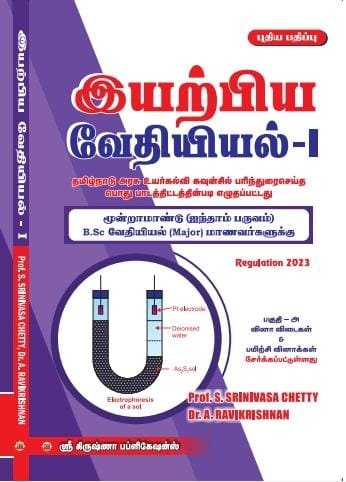
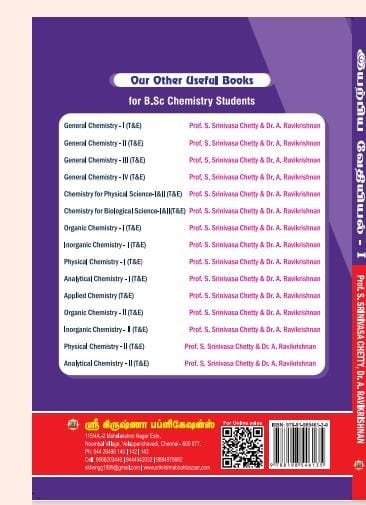
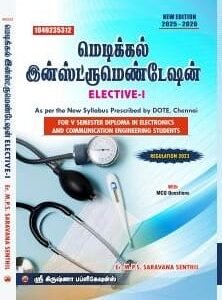


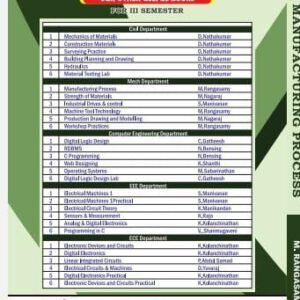




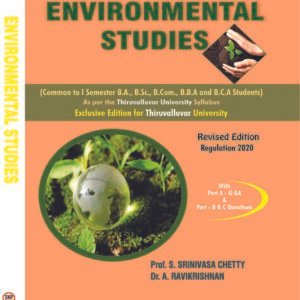
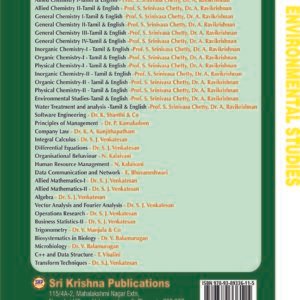
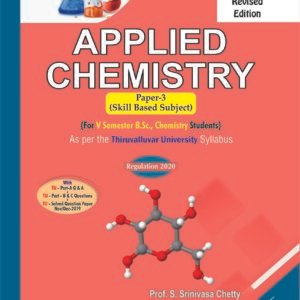
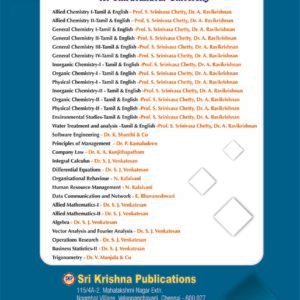

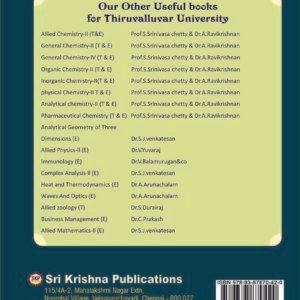
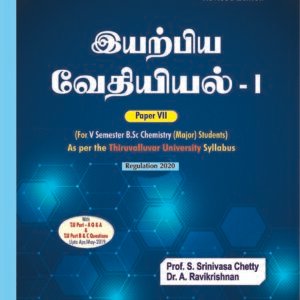

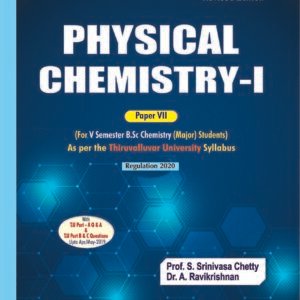
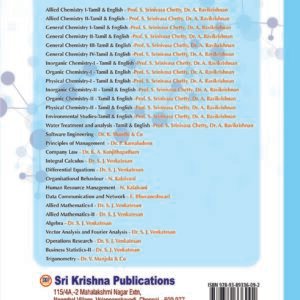
Reviews
There are no reviews yet.